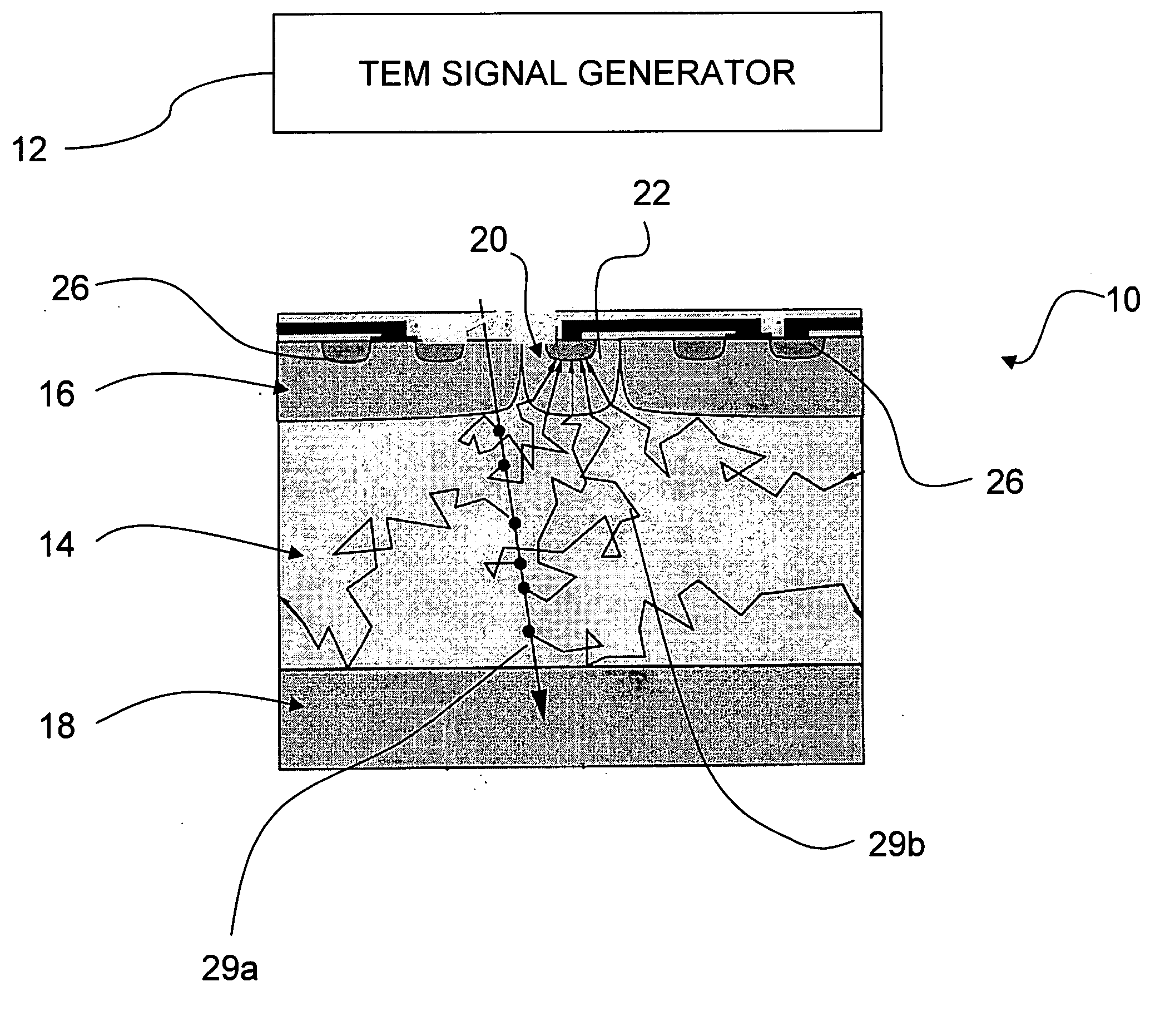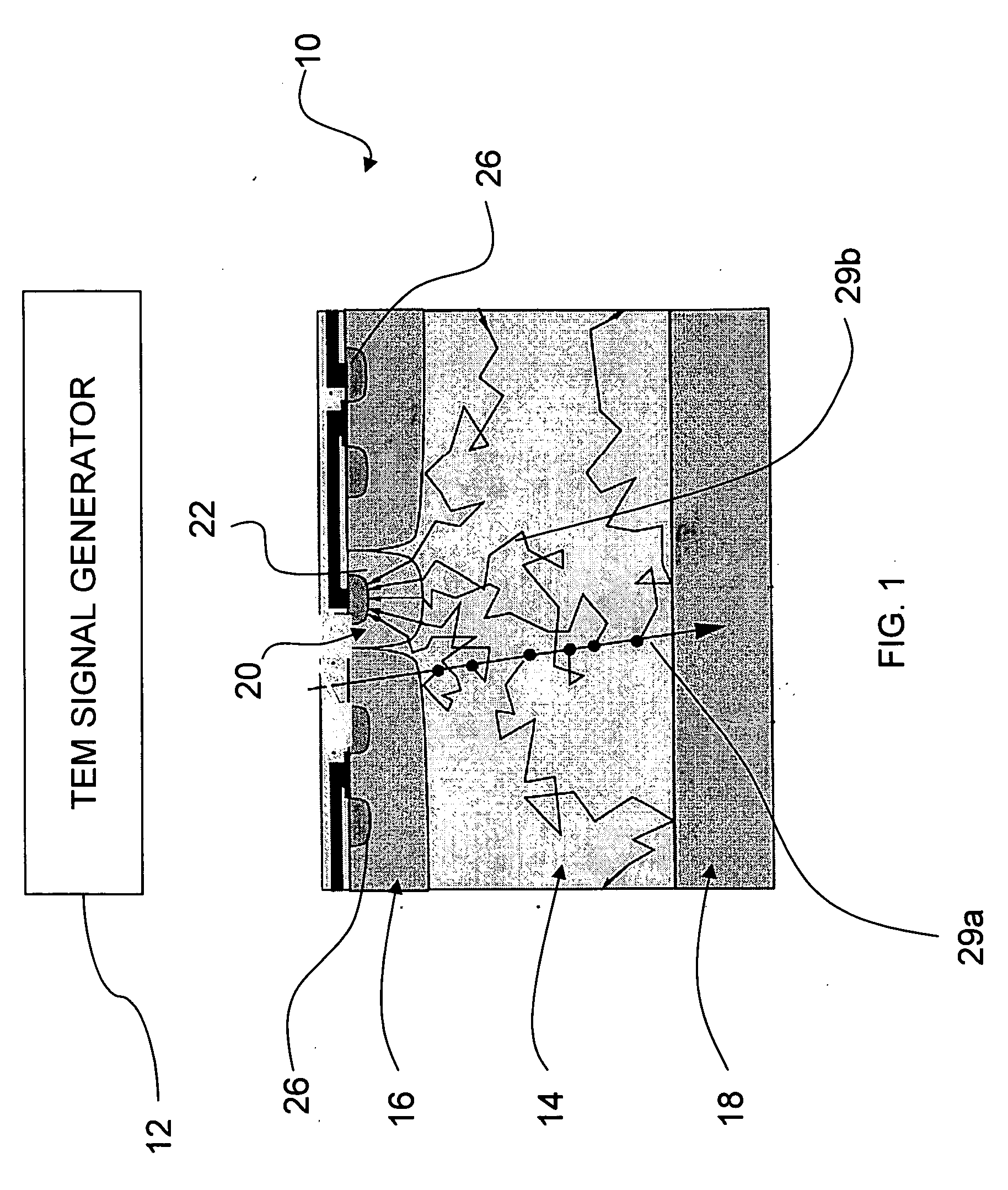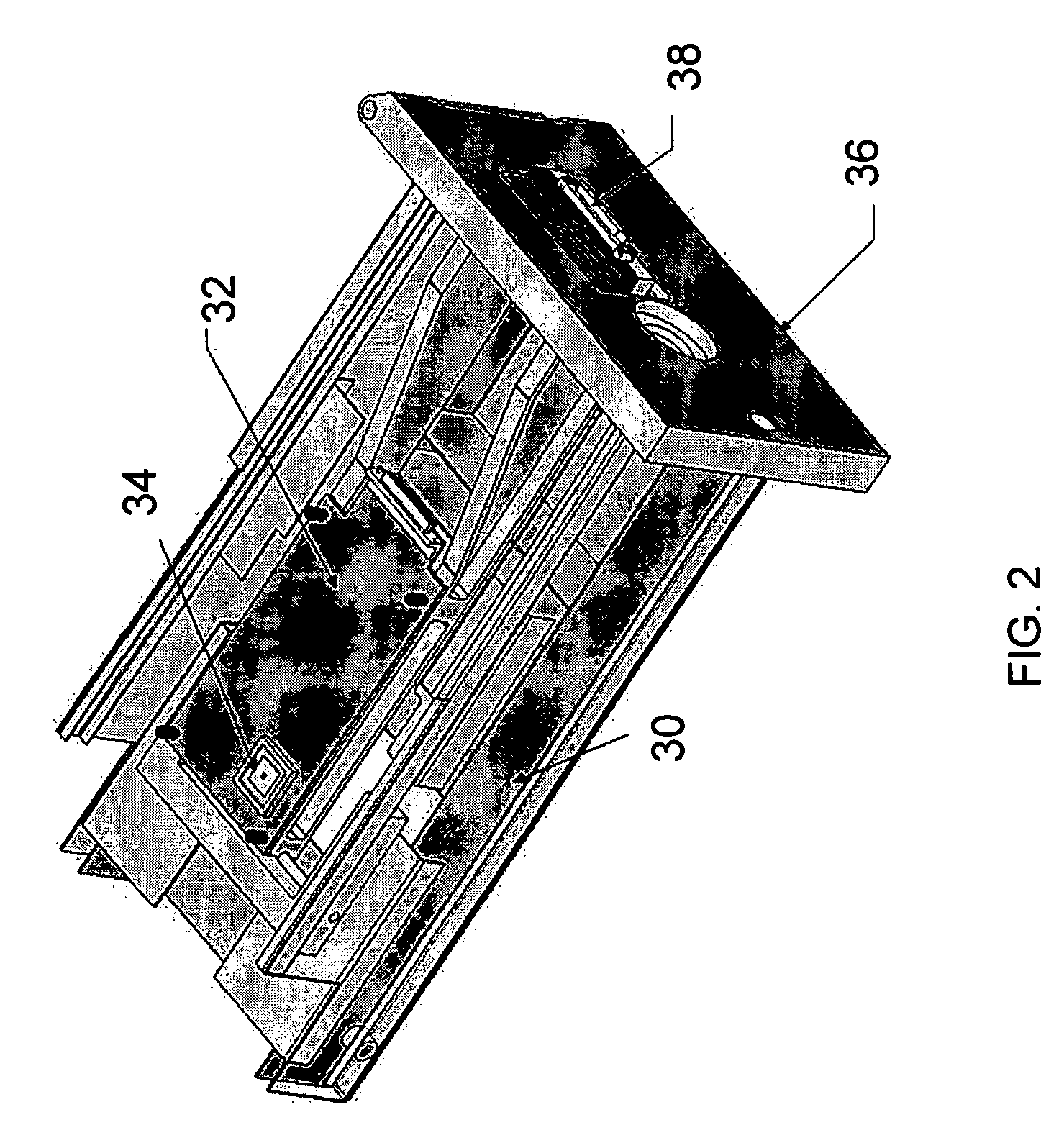Direct collection transmission electron microscopy
- Summary
- Abstract
- Description
- Claims
- Application Information
AI Technical Summary
Benefits of technology
Problems solved by technology
Method used
Image
Examples
Embodiment Construction
[0021] Embodiments of the invention provide a detector for transmission electron microscopy. Direct detection is achieved without film or a scintillation screen. A preferred embodiment active pixel detector of the invention has a plurality of pixels. Each pixel includes one or more photodiodes formed by a p-n junction to collect electrons generated by an incident high energy electron in its passage through an epitaxial layer into which the p-n junction is formed. Each pixel integrates the collected electrons during an exposure period. At the conclusion of the exposure period, the contents of the active pixel detector array can be read out, digitized and stored. In preferred embodiments, integration and read out electronics are implemented near the top surface of a chip, and are transparent to the incident electrons.
[0022] In a preferred embodiment, the epitaxial layer is formed on a substrate that is thin enough to limit or eliminate signals caused by backscattering of electrons fr...
PUM
 Login to View More
Login to View More Abstract
Description
Claims
Application Information
 Login to View More
Login to View More - R&D
- Intellectual Property
- Life Sciences
- Materials
- Tech Scout
- Unparalleled Data Quality
- Higher Quality Content
- 60% Fewer Hallucinations
Browse by: Latest US Patents, China's latest patents, Technical Efficacy Thesaurus, Application Domain, Technology Topic, Popular Technical Reports.
© 2025 PatSnap. All rights reserved.Legal|Privacy policy|Modern Slavery Act Transparency Statement|Sitemap|About US| Contact US: help@patsnap.com



